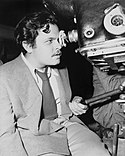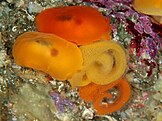Wikipedia:Main Page history/2020 December 11b
From today's featured articleThe London Beer Flood was an accident at Meux & Co's Horse Shoe Brewery (pictured) on 17 October 1814. When one of the 22-foot-tall (6.7 m) wooden vats of fermenting porter burst, the pressure destroyed another vessel, and between 128,000 and 323,000 imperial gallons (580,000–1,470,000 l; 154,000–388,000 US gal) of beer were released. The resulting wave of porter destroyed the back wall of the brewery and swept into an area of slum dwellings. Eight people were killed. The coroner's inquest returned a verdict that they had lost their lives "casually, accidentally and by misfortune". The brewery was nearly bankrupted by the event; it avoided collapse after a rebate from HM Excise on the lost beer. After the accident the brewing industry gradually stopped using large wooden vats, replacing them with lined concrete vessels. The brewery moved in 1921, and the Dominion Theatre is now where the brewery used to stand. (Full article...)
Recently featured:
Did you know ...
|
In the news
On this dayDecember 11: First day of Hanukkah (Judaism, 2020)
More anniversaries:
|
From today's featured list

American filmmaker Orson Welles is best remembered for his innovative work in radio, theatre, and film. He is widely considered one of the greatest and most influential directors of all time. While in his twenties, Welles directed a number of stage productions before creating the infamous 1938 radio adaptation of H. G. Wells's novel The War of the Worlds. Welles's directorial film debut Citizen Kane (1941), in which he also starred as Charles Foster Kane, garnered him the Academy Award for Best Original Screenplay and nominations for Best Actor and Best Director. The film is consistently ranked as the greatest film ever made. Welles's second film was The Magnificent Ambersons (1942). He then directed the film-noir The Lady from Shanghai (1947), in which he also starred opposite his estranged wife Rita Hayworth. His 1951 film Othello won the Palme d'Or at the Cannes Film Festival. (Full list...)
Today's featured picture

|
The Bernina railway is a single-track, metre-gauge railway line forming part of the Rhaetian Railway. It links the spa resort of St. Moritz, in the canton of Graubünden, Switzerland, with the town of Tirano, in the Province of Sondrio, Italy. This photograph shows a train near the top of the Bernina Pass at an elevation of more than 2,100 metres (6,900 ft). The two ABe 4/4 multiple units have excess power with only two passenger cars, so some freight is carried along at the rear of the train. Photograph credit: David Gubler
Recently featured:
|
Other areas of Wikipedia
- Community portal – Bulletin board, projects, resources and activities covering a wide range of Wikipedia areas.
- Help desk – Ask questions about using Wikipedia.
- Local embassy – For Wikipedia-related communication in languages other than English.
- Reference desk – Serving as virtual librarians, Wikipedia volunteers tackle your questions on a wide range of subjects.
- Site news – Announcements, updates, articles and press releases on Wikipedia and the Wikimedia Foundation.
- Village pump – For discussions about Wikipedia itself, including areas for technical issues and policies.
Wikipedia's sister projects
Wikipedia is hosted by the Wikimedia Foundation, a non-profit organization that also hosts a range of other projects:
Free media repository
Wiki software development
Wikimedia project coordination
Free textbooks and manuals
Free knowledge base
Free-content news
Collection of quotations
Free-content library
Directory of species
Free learning resources
Free travel guide
Dictionary and thesaurus




